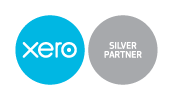Accurate costing information enables managers to measure profit, so that they can make the best decisions for the company’s future. Below, we summarize precisely why accurate costing is so crucial to the success of any business.
Accurate costing helps businesses stay competitive
To be as competitive as possible, you need to understand exactly how much your company spends on any given asset. This way, you have a reliable means of setting competitive sales prices that will encourage profit and attract consumers. Inaccurate costing information may lead to mistakenly setting lower sales prices relative to your expenditure, which ultimately decreases profit.
Inaccurate costing information may even put you at risk for charges of predatory pricing practices. If you have inaccurate information about your expenditure, you may mistakenly set sales prices at a lower amount than costs. In some places, this merits legal action, and a business can be sued for using artificially low prices in attempts to drive competitors out of business. Accurate information about costing will help to protect you against costly mistakes like this.
Making smart choices
Some of the most important business decisions you will make will be heavily influenced by cost factors. In these situations, you will often have to choose one alternative over another, and this involves distinguishing between relevant and irrelevant costs.
The original cost to your company of any given asset, before accounting for depreciation, can easily be mistaken as a relevant cost. However, it is in fact the disposable value of this asset which is the relevant amount, rather than the original cost.
Imagine, for example, that your company bought certain machinery for its operations at a cost of $35,000. When deciding between keeping this machine or replacing it with a new one, the relevant cost is its value after accounting for depreciation.
So, let’s say that the machine at this time has a salvage value of $20,000. This is the relevant cost that you should consider when deciding whether to sell the asset or keep using it. Being aware of the difference between irrelevant and relevant costs will help you to consider the future cash flows of each action, rather than simply considering the historical-based costs to your company.
Relatedly, you need accurate costing information to help you to value assets. The balance sheet will record the cost values for most assets, and in order to understand these you need to also understand the cost basis of its inventory and certain other assets.
SaaS Implementation eBook
Ready to move your business software online?
- Learn how to identify roadblocks and set clear objectives
- Manage change well and implement great employee training
- Create momentum and make the cloud work for you
Download the e-book here.

